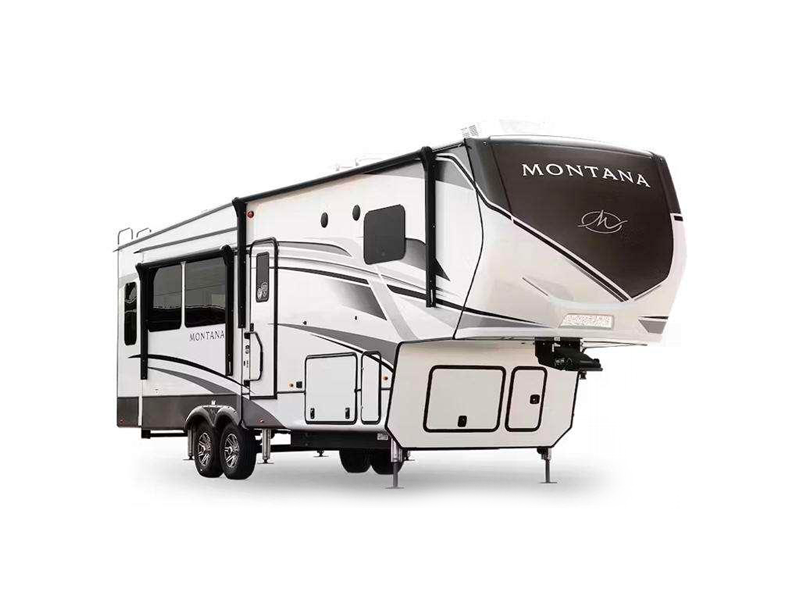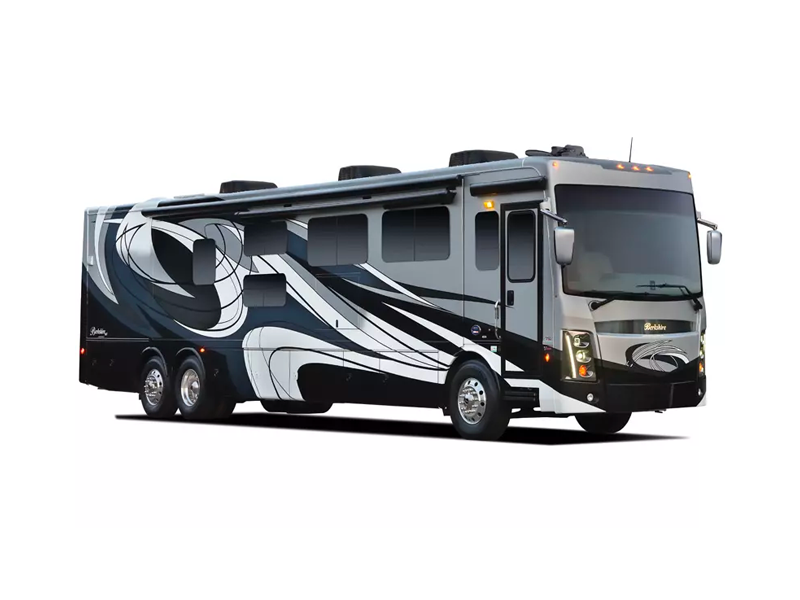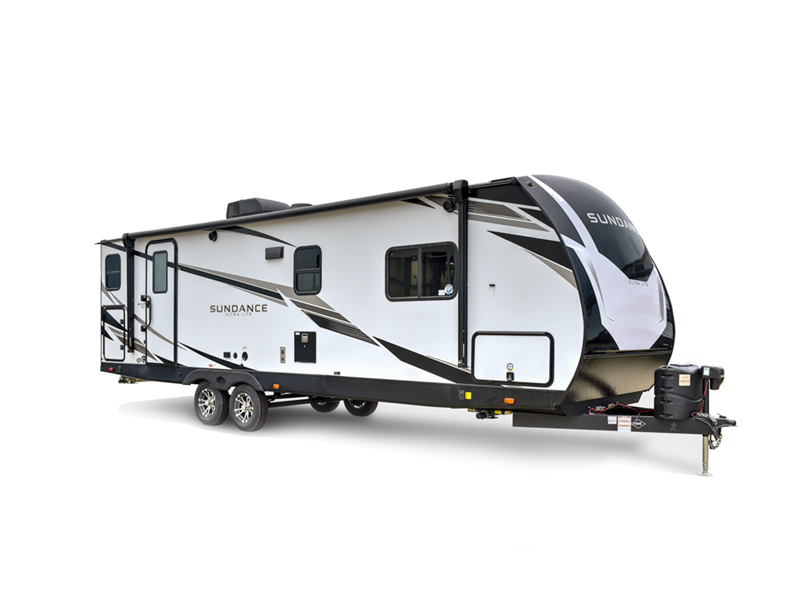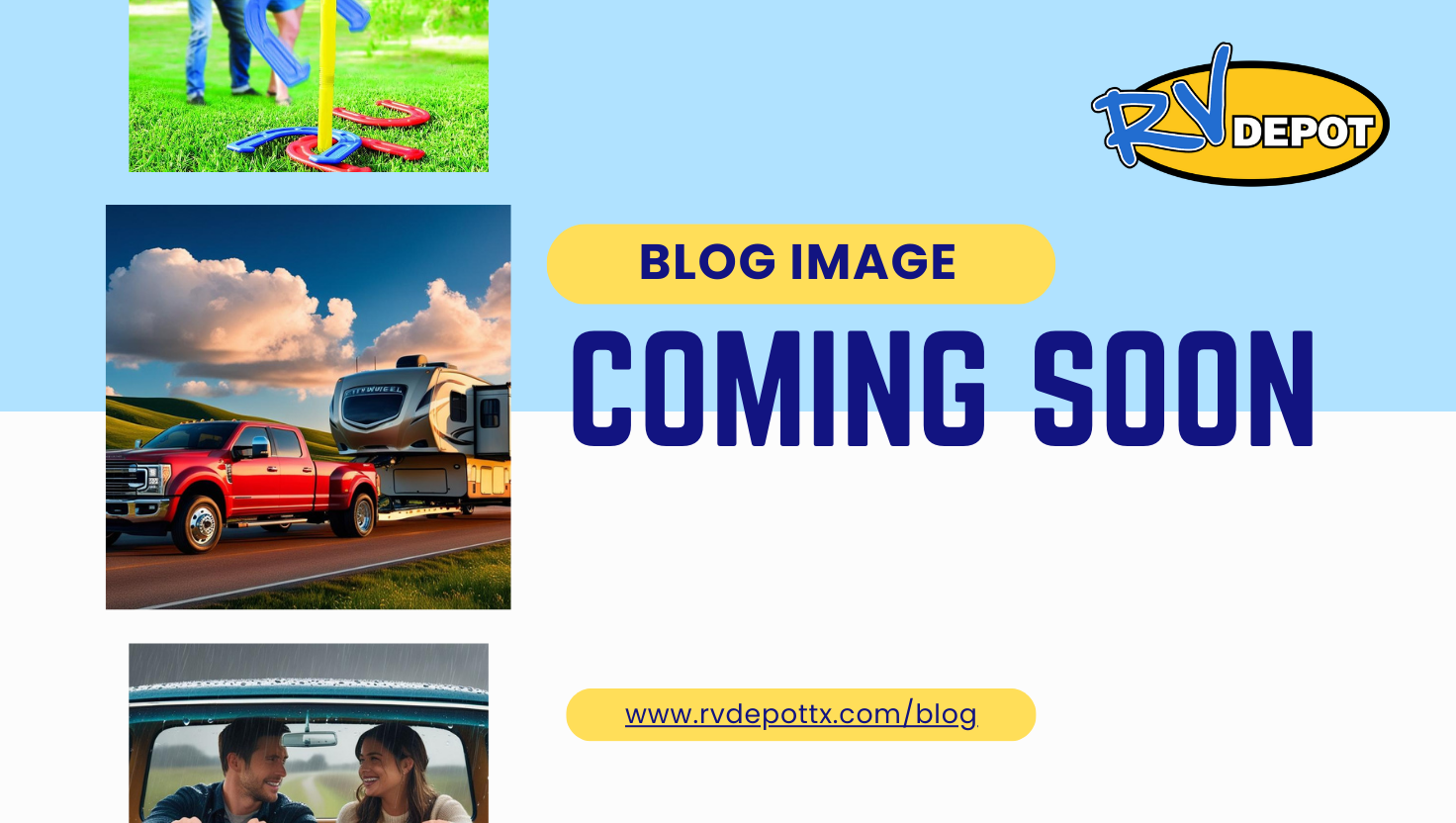Your RV roof is one of the most critical components of your recreational vehicle, yet it’s often the most neglected until problems become expensive emergencies. A single roof leak can quickly escalate into thousands of dollars in water damage, affecting everything from flooring and furniture to electrical systems and structural integrity. What makes RV roof maintenance even more challenging is that many problems develop gradually and go unnoticed until significant damage has already occurred.
The harsh reality is that RV roofs face constant assault from UV rays, temperature extremes, hail, wind, and debris that would destroy most residential roofing materials in a matter of years. RV roofs must be lightweight yet durable, flexible yet strong, and capable of withstanding the constant movement and vibration of travel. This demanding environment means that even the highest-quality RV roofs require regular attention and maintenance to achieve their expected lifespan.
Many RV owners underestimate the importance of proactive RV roof maintenance, thinking that occasional visual inspections are sufficient. However, by the time roof problems are visible from the ground or inside the RV, expensive damage has often already occurred. Water intrusion can cause rot, mold, and structural damage that may not be immediately apparent but can compromise the entire RV’s integrity and value.
The good news is that proper RV roof maintenance can significantly extend your roof’s lifespan and prevent most costly repairs. With the right knowledge, tools, and maintenance schedule, you can protect your investment and ensure that your RV roof provides reliable protection for years to come. Understanding the specific needs of your roof material and implementing a systematic maintenance approach is key to long-term success.
Expanding the life of your RV roof can be achieved by implementing regular maintenance and taking preventative measures. Here are some tips to help extend the lifespan of your RV roof:
1. Regular Inspections: The Foundation of RV Roof Maintenance
Perform regular inspections of your RV roof to identify any signs of damage or wear. Look for cracks, tears, loose seams, or areas where the roof material may be deteriorating. Catching issues early allows for prompt repairs, preventing further damage.
Comprehensive Inspection Checklist:
- Surface condition – Check for cracks, tears, or deterioration
- Seam integrity – Inspect all seams for separation or lifting
- Vent and fixture seals – Verify all penetrations are properly sealed
- Drainage systems – Ensure gutters and drains are clear and functional
- Membrane condition – Look for bubbling, chalking, or UV damage
Inspection Frequency Guidelines:
| Season | Inspection Type | Focus Areas |
|---|---|---|
| Spring | Comprehensive pre-season check | Winter damage, seal condition |
| Summer | Monthly visual inspection | UV damage, thermal expansion effects |
| Fall | Pre-storage inspection | Debris removal, drainage preparation |
| Winter | Snow/ice damage check | Weight load damage, ice dam formation |
Professional Inspection Tools:
- Moisture meters to detect hidden water intrusion
- Infrared cameras to identify thermal bridges and wet areas
- Core samples for membrane thickness testing
- Adhesion testing to check membrane bond strength
Documentation and Records: Keep detailed records of all inspections, including photos, dates, and findings. This documentation helps track roof condition over time and can be valuable for warranty claims or when selling your RV.
2. Cleanliness: Protecting Your RV Roof from Contamination
Keep your RV roof clean by regularly removing dirt, debris, and leaves. These can trap moisture and lead to mold, mildew, or rot. Use a soft brush or a non-abrasive cleaning solution recommended for your specific roof material. Avoid using harsh chemicals or abrasive materials that could damage the roof.
Proper Cleaning Techniques by Roof Type:
| Roof Material | Cleaning Method | Recommended Products | Frequency |
|---|---|---|---|
| EPDM Rubber | Gentle scrubbing with rubber roof cleaner | Dicor, Protect All | Monthly |
| TPO | Mild soap and water with soft brush | Dawn dish soap, TPO cleaners | Monthly |
| Fiberglass | Non-abrasive cleaners with soft cloths | Marine wax, fiberglass cleaners | Bi-monthly |
| Metal | Mild detergent with soft brushes | Aluminum cleaners, metal polish | Monthly |
Cleaning Safety Procedures:
- Use proper ladder safety and have someone spot you
- Wear non-slip shoes with good traction
- Clean during moderate temperatures to prevent rapid drying
- Rinse thoroughly to remove all cleaning residue
- Inspect while cleaning for any damage or wear
Specialized Cleaning Situations:
- Tree sap removal – Use specialized solvents safe for your roof material
- Mold and mildew – Apply appropriate antimicrobial treatments
- Road tar – Remove carefully with appropriate solvents
- Bird droppings – Clean immediately to prevent acid damage
3. Prevent Water Accumulation: Ensuring Proper Drainage
Ensure proper drainage by regularly checking and clearing any debris from gutters, downspouts, and roof drains. Standing water can accelerate roof deterioration and increase the risk of leaks. Additionally, avoid parking under trees or in areas where branches or tree sap could cause damage to the roof.
Drainage System Maintenance:
- Clear gutters of leaves, debris, and sediment buildup
- Check downspout connections for proper attachment and flow
- Inspect roof drains for clogs or damage
- Verify drainage slope to ensure water flows properly
- Test drainage with hose to confirm proper function
Water Accumulation Prevention:
- Level your RV to prevent water pooling
- Install additional drains if needed for problem areas
- Use roof slope modifications to direct water flow
- Address low spots that collect water
- Consider drainage improvements for chronic problem areas
Environmental Considerations:
- Avoid parking under trees that drop sap or debris
- Choose camping spots with good drainage
- Consider prevailing winds that may blow debris onto your roof
- Monitor weather patterns for potential water accumulation
4. UV Protection: Shielding Your Roof from Sun Damage
Apply a UV protectant specifically formulated for your RV roof material. UV rays from the sun can degrade the roof over time. The protectant helps prevent cracking, fading, and deterioration caused by sun exposure.
UV Protection by Roof Material:
| Material | UV Protection Method | Application Frequency | Expected Lifespan |
|---|---|---|---|
| EPDM | UV-resistant coatings | Every 3-4 years | 15-20 years with protection |
| TPO | Factory UV resistance + coatings | Every 5-7 years | 20-25 years with protection |
| Fiberglass | UV-resistant wax and sealers | Every 6 months | 10-15 years with protection |
| Metal | Reflective coatings | Every 5-10 years | 25+ years with protection |
Application Best Practices:
- Clean roof thoroughly before applying protectant
- Choose appropriate weather conditions for application
- Follow manufacturer instructions for coverage and drying times
- Use proper application tools for even coverage
- Allow adequate cure time before exposure to elements
Signs of UV Damage:
- Chalking – White powdery residue on surface
- Cracking – Small stress cracks in membrane
- Color fading – Loss of original color intensity
- Brittleness – Material becomes less flexible
- Surface deterioration – Granular or rough texture
5. Sealant Maintenance: Preventing Water Intrusion
Check and maintain the sealant around vents, skylights, and other roof protrusions. Over time, sealant can shrink or crack, creating potential entry points for water. Inspect and reapply sealant as needed to maintain a watertight seal.
Sealant Inspection Areas:
- Vent penetrations – Kitchen, bathroom, and refrigerator vents
- Skylight perimeters – All edges and corners
- Antenna mounts – Satellite and TV antenna bases
- Air conditioning units – Mounting hardware and ductwork
- Roof access hatches – Emergency exits and maintenance access
Sealant Types and Applications:
| Sealant Type | Best Use | Lifespan | Application Notes |
|---|---|---|---|
| Silicone | General purpose, non-porous surfaces | 5-10 years | Not paintable, excellent adhesion |
| Polyurethane | High-movement joints | 10-15 years | Paintable, excellent flexibility |
| Butyl | Bedding compound for fixtures | 10-20 years | Excellent adhesion, remains flexible |
| Acrylic | Paintable applications | 3-5 years | Easy application, moderate durability |
Proper Sealant Application:
- Remove old sealant completely
- Clean surfaces thoroughly
- Apply primer if required
- Apply sealant in continuous bead
- Tool surface for proper adhesion
- Allow full cure before exposure
6. Avoid Walking on Roof: Preventing Physical Damage
Minimize foot traffic on the roof as much as possible. Excessive walking or standing on the roof can cause damage to the roof material and increase the risk of leaks. When necessary to access the roof, use a suitable walkway or sturdy boards to distribute weight evenly.
Safe Roof Access Procedures:
- Use appropriate ladder safety with 3-point contact
- Wear soft-soled shoes to minimize membrane damage
- Distribute weight with plywood or walkway boards
- Avoid stepping on seams or vulnerable areas
- Have someone spot you during roof access
Alternative Access Methods:
- Install permanent walkways for frequently accessed areas
- Use telescoping tools for inspection and maintenance
- Consider professional service for complex roof work
- Install roof hatches for easier interior access
- Use drone technology for inspection where possible
Weight Distribution Guidelines:
- Use 2×12 boards or wider for weight distribution
- Avoid concentrated loads on single points
- Stay over structural supports when possible
- Limit roof access to essential maintenance only
- Consider roof load capacity for your specific RV model
7. Store RV Properly: Protecting During Non-Use Periods
When not in use, store your RV in a covered area or use an RV cover to protect it from prolonged exposure to the elements. This reduces UV exposure and helps maintain the integrity of the roof material.
Storage Options and Benefits:
| Storage Type | UV Protection | Cost | Roof Lifespan Extension |
|---|---|---|---|
| Indoor Storage | Excellent | High | 50-100% |
| Covered Storage | Good | Moderate | 30-50% |
| RV Cover | Good | Low | 25-40% |
| Outdoor Storage | None | None | Baseline |
Proper Storage Preparation:
- Clean roof thoroughly before storage
- Apply protective treatments as needed
- Ensure proper ventilation to prevent condensation
- Check and repair any damage before storage
- Monitor periodically during storage period
RV Cover Considerations:
- Choose breathable materials to prevent condensation
- Ensure proper fit to prevent wind damage
- Check tie-down systems regularly
- Inspect cover condition for tears or wear
- Remove during high winds to prevent damage
8. Professional Inspections: Expert Assessment and Maintenance
Periodically have your RV roof professionally inspected. A qualified RV technician or roofer can assess the condition of the roof, identify any hidden issues, and provide expert advice on maintenance or repairs.
Professional Inspection Benefits:
- Specialized equipment for thorough assessment
- Expert knowledge of different roof systems
- Early problem detection before major damage occurs
- Warranty protection on professional work
- Comprehensive reporting for insurance purposes
Professional Service Timing:
- Annual comprehensive inspection for most RVs
- Pre-purchase inspection for used RVs
- Post-storm assessment after severe weather
- Warranty inspection for newer RVs
- Pre-sale inspection to verify roof condition
Professional Service Capabilities:
- Moisture detection using specialized meters
- Thermal imaging to identify problem areas
- Structural assessment of roof support systems
- Membrane testing for adhesion and integrity
- Repair estimates and recommendations
Professional RV Roof Maintenance at RV Depot
While many aspects of RV roof maintenance can be handled by dedicated RV owners, some situations require professional expertise to ensure proper care and prevent costly mistakes. At RV Depot, our experienced technicians specialize in all aspects of RV roof maintenance and can provide comprehensive care for your valuable investment.
Professional maintenance ensures that your RV roof receives proper care using the right materials and techniques. This investment in professional service can significantly extend your roof’s lifespan and prevent expensive repairs that result from improper maintenance or neglect. When roof problems occur, our repair services can quickly address issues to prevent further damage. Our experienced team can handle everything from minor leaks to major roof restoration projects.
Contact RV Depot Today:
📍 Visit us at 4319 N Main St, Cleburne, TX
📞 Call (817) 678-5133 for professional RV roof maintenance
🌐 Visit rvdepottx.com for more information
Protect your RV investment with professional RV roof maintenance from RV Depot. Our expert team will ensure your roof receives the specialized care it needs to provide years of reliable protection for your adventures.






